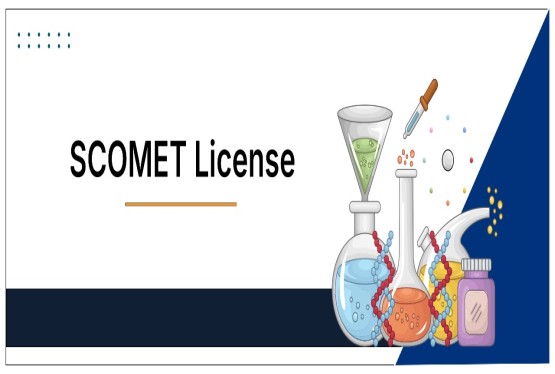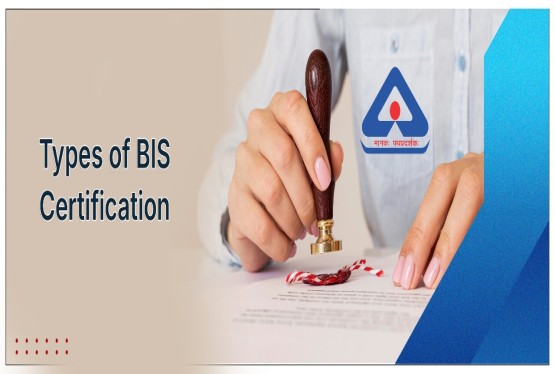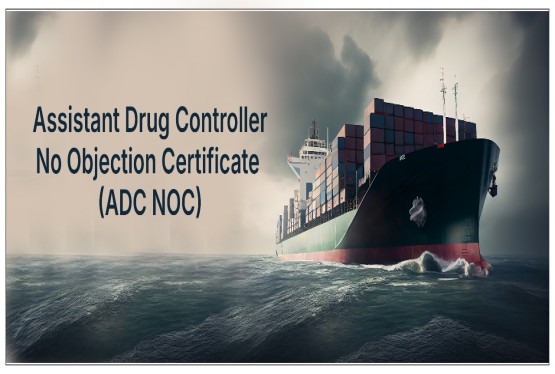The Industrial Revolution laid the foundation for a modern and mechanized world, but it also brought with it one of the biggest environmental concerns—industrial waste. As industries developed and expanded, they began producing significant amounts of waste, some of which were extremely dangerous to human health and the environment. This type of waste, known as hazardous waste, has become a growing challenge, especially in countries like India, where industrial growth and urbanization have risen rapidly.
What is Hazardous Waste?
Hazardous waste is not ordinary waste. It contains substances that are toxic, flammable, reactive, or corrosive in nature. The Ministry of Environment, Forest and Climate Change (MoEFCC) defines hazardous waste as any waste (excluding domestic and radioactive waste) which, because of its characteristics such as toxicity, ignitability, reactivity, corrosiveness, or infectiousness, poses a significant risk to human health or the environment if not properly managed.
These wastes come in various forms—solids, liquids, gases—and are often the by-product of manufacturing processes. If they are not treated, stored, transported, or disposed of correctly, they can contaminate soil, water, and air, causing long-term environmental damage and serious health issues.
Situation of Hazardous Waste in India
India, with a population of over 1.3 billion and rapid urbanization, faces an enormous challenge in managing hazardous waste. It is estimated that over 51.1 million metric tonnes (MMT) of waste are generated every year, of which around 7.46 MMT is categorized as hazardous. This waste is produced by nearly 43,936 registered industries across various sectors such as pharmaceuticals, chemicals, paints, dyes, fertilizers, and more.
With such huge volumes of hazardous waste being generated every year, it has become increasingly difficult for authorities alone to manage and control it effectively. Therefore, there is a growing need for private players to step in and contribute by setting up Hazardous Waste Management plants, recycling facilities, and treatment centers.
What is Hazardous Waste Management?
Hazardous Waste Management refers to the collection, treatment, storage, transportation, and disposal of hazardous waste in a manner that minimizes risk to human health and the environment. Proper hazardous waste management involves scientific and regulatory compliance throughout the waste’s lifecycle, from the point of generation to its final disposal.
In India, hazardous waste is managed under the regulatory framework provided by the Hazardous and Other Wastes (Management and Transboundary Movement) Rules, 2016, which replaced the older 2008 rules. These rules aim to ensure that hazardous waste is handled responsibly and does not pose harm to people or the environment.
Importance of Hazardous Waste Management Authorization
To ensure that only competent entities handle hazardous waste, the government mandates obtaining Hazardous Waste Management Authorization before starting such activities. This authorization is provided by the concerned State Pollution Control Board (SPCB) under the supervision of the Central Pollution Control Board (CPCB) and the Ministry of Environment, Forest and Climate Change (MoEFCC).
This authorization is a formal legal approval that allows entities to operate facilities involved in the generation, treatment, recycling, reuse, storage, transportation, and disposal of hazardous waste. Without this approval, no industry or individual is allowed to carry out any activity related to hazardous waste.
Eligibility Criteria for Hazardous Waste Management Authorization
Before applying for Hazardous Waste Management Authorization, the applicant must fulfill certain conditions. First, the facility or unit should have adequate infrastructure to handle hazardous waste in compliance with the provisions of the Hazardous Waste (Management and Handling) Rules.
This includes the proper collection, segregation, storage, treatment, recycling, and safe disposal of waste. The premises must be equipped with appropriate machinery and equipment as per the standard operating procedures and technical guidelines prescribed by the Central Pollution Control Board.
Furthermore, the unit must have a technically qualified and trained workforce capable of handling hazardous materials. This ensures that the waste is managed in a manner that minimizes harm to the environment and human life.
There are currently around 88 hazardous waste incinerators and over 220 recycling facilities in India, reflecting the scale and seriousness of the hazardous waste management industry.
Required Documents for Hazardous Waste Management Authorization
To obtain Hazardous Waste Management Authorization, the applicant must submit various documents along with the application. These include:
-
Consent to Establish under the Air (Prevention and Control of Pollution) Act, 1981 and the Water (Prevention and Control of Pollution) Act, 1974 issued by the concerned SPCB.
-
Consent to Operate under the same Acts mentioned above.
-
GST registration certificate as proof of business registration.
-
Proof of ownership or rent/lease agreement of the business premises.
-
Factory license or trade license from the local authority.
-
Company documents, including Memorandum of Association (MOA), Articles of Association (AOA), and Certificate of Incorporation (for Private Limited Company, One Person Company, Public Limited Company or LLP).
-
Layout plan of the facility showing the infrastructure setup.
-
KYC documents such as PAN card and Aadhar card of the applicant.
-
Electricity bill as a utility proof of the business address.
Having all these documents in order ensures a smoother approval process and demonstrates that the applicant is well-prepared to manage hazardous waste responsibly.
Process for Obtaining Hazardous Waste Management Authorization
The procedure for obtaining Hazardous Waste Management Authorization is governed by Rule 6 of the Hazardous and Other Wastes (Management and Transboundary Movement) Rules, 2016. The process is divided into three major steps:
1. Filing the Application
The applicant needs to file Form 1 through the official portal of the State Pollution Control Board after registering and generating a login ID. This form must be filled with accurate details about the business and should be accompanied by all the supporting documents mentioned earlier.
2. Review and Inspection
Once the application is submitted, the State Pollution Control Board reviews the form and documents to ensure compliance with legal requirements. They may also conduct a field inspection of the site to assess the infrastructure, operations, and safety protocols in place.
The inspection is done by authorized officers who prepare a detailed field visit report, confirming whether the applicant is fit to handle hazardous waste.
3. Grant of Authorization
If the authorities find no discrepancies in the application or during inspection, they issue the Hazardous Waste Management Authorization. This approval is accompanied by the field visit report and serves as the legal license to commence hazardous waste-related activities.
Categorization of Hazardous Waste in India
Hazardous waste in India is broadly classified into two categories:
Domestically Generated Industrial Hazardous Waste
This category includes waste generated within India by various industries such as pharmaceuticals, petrochemicals, pesticides, dyes, paints, petroleum refineries, and engineering units. These wastes contain highly dangerous substances like cyanides, heavy metals, complex organic compounds, and acids which are reactive or toxic in nature.
Imported Hazardous Waste
India also imports hazardous waste from other countries for the purpose of recycling and recovery. Some industries use imported waste as raw material or for extracting metals and other valuable substances. This import is regulated under strict conditions to ensure safe handling and to avoid illegal dumping.
Authorities Involved in Granting Authorization
Several regulatory bodies play an important role in regulating and granting Hazardous Waste Management Authorization in India:
-
Ministry of Environment, Forest and Climate Change (MoEFCC): The apex body responsible for formulating hazardous waste policies and rules.
-
Central Pollution Control Board (CPCB): Provides technical guidance and monitors the implementation of rules at the national level.
-
State Pollution Control Boards (SPCBs)/Pollution Control Committees (PCCs): These bodies handle the actual authorization process and enforcement within their respective states.
-
Directorate General of Foreign Trade (DGFT): Regulates the import/export of hazardous waste.
-
Customs and Port Authorities: Monitor and control hazardous waste movement across national borders.
Validity and Renewal of Authorization
Once issued, the Hazardous Waste Management Authorization is valid for a period of five years. Businesses must apply for renewal at least 120 days before the expiry date to avoid operational disruptions.
The renewal process is similar to the initial application and may involve a re-inspection of the premises to verify continued compliance with the rules.
Challenges in Hazardous Waste Management
Even though regulatory frameworks exist, there are several challenges in the effective implementation of hazardous waste management in India. These include:
-
Lack of awareness among small-scale industries
-
Inadequate infrastructure in rural or remote areas
-
High operational costs for waste treatment
-
Illegal dumping and non-compliance by certain units
-
Limited capacity of existing recycling and incineration facilities
To overcome these challenges, the government is encouraging public-private partnerships, better monitoring, and technological innovation in waste treatment methods.
Conclusion
Hazardous Waste Management is an essential part of India’s environmental protection and public health strategy. With the increasing volume of hazardous waste generated every year, it is important that industries, regulators, and society work together to ensure safe and effective waste management. Obtaining Hazardous Waste Management Authorization is not just a legal formality but a responsibility that every hazardous waste-generating unit must fulfill to ensure sustainable development.
Frequently Asked Questions (FAQs)
Q1. What defines hazardous waste according to the Ministry of Environment, Forest and Climate Change (MoEFCC)?
Ans. Hazardous waste encompasses substances, excluding domestic and radioactive wastes, that exhibit characteristics such as corrosivity, reactivity, ignitability, toxicity, or infectiousness, posing potential adverse effects on health and the environment.
Q2. What is the current scale of hazardous waste generation in India?
Ans. India generates approximately 51.1 million metric tonnes (MMT) of waste annually, with around 7.46 MMT classified as hazardous.
Q3. What are some of the primary industrial sources of hazardous waste in India?
Ans. Hazardous waste in India originates from various sectors, including petrochemicals, pharmaceuticals, pesticides, paints, dyes, petroleum, fertilizers, asbestos, caustic soda, inorganic chemicals, and general engineering industries.
Q4. What is the primary regulatory framework governing hazardous waste management in India?
Ans. The cornerstone of hazardous waste management in India is the Hazardous Waste (Management, Handling, and Transboundary Movement) Rules, 2008 (as notified by the MoEFCC and superseding earlier regulations). These rules aim to ensure the safe handling, generation, processing, treatment, packaging, storage, transportation, use, reprocessing, collection, conversion, 1 sale, destruction, and disposal of hazardous waste.
Q5. What are the key regulatory bodies involved in the implementation and enforcement of hazardous waste management regulations in India?
Ans. The key regulatory bodies include the Ministry of Environment, Forest and Climate Change (MoEFCC) for policy formulation and oversight, the Central Pollution Control Board (CPCB) for technical guidance and national inventories, and the State Pollution Control Boards (SPCBs) for state-level implementation, authorization, and monitoring for compliance.












































































_crop10_thumb.jpg)







_Rules,_2025_learn_crop10_thumb.jpg)




























































